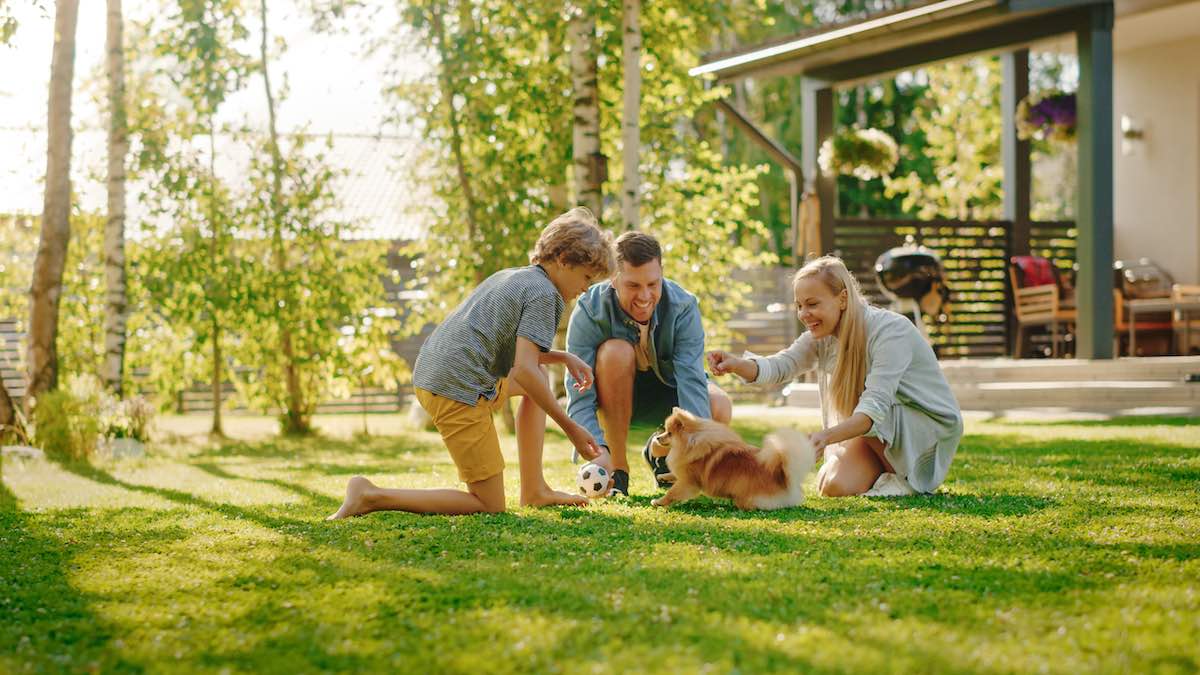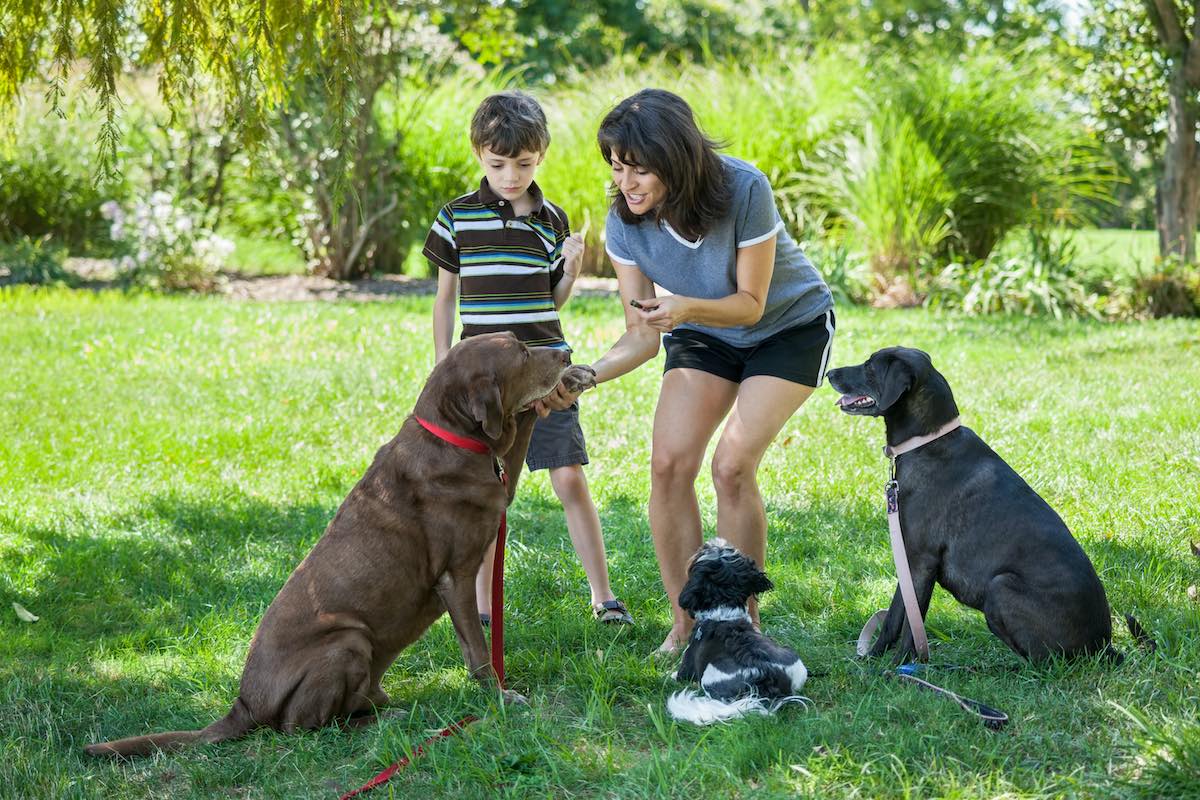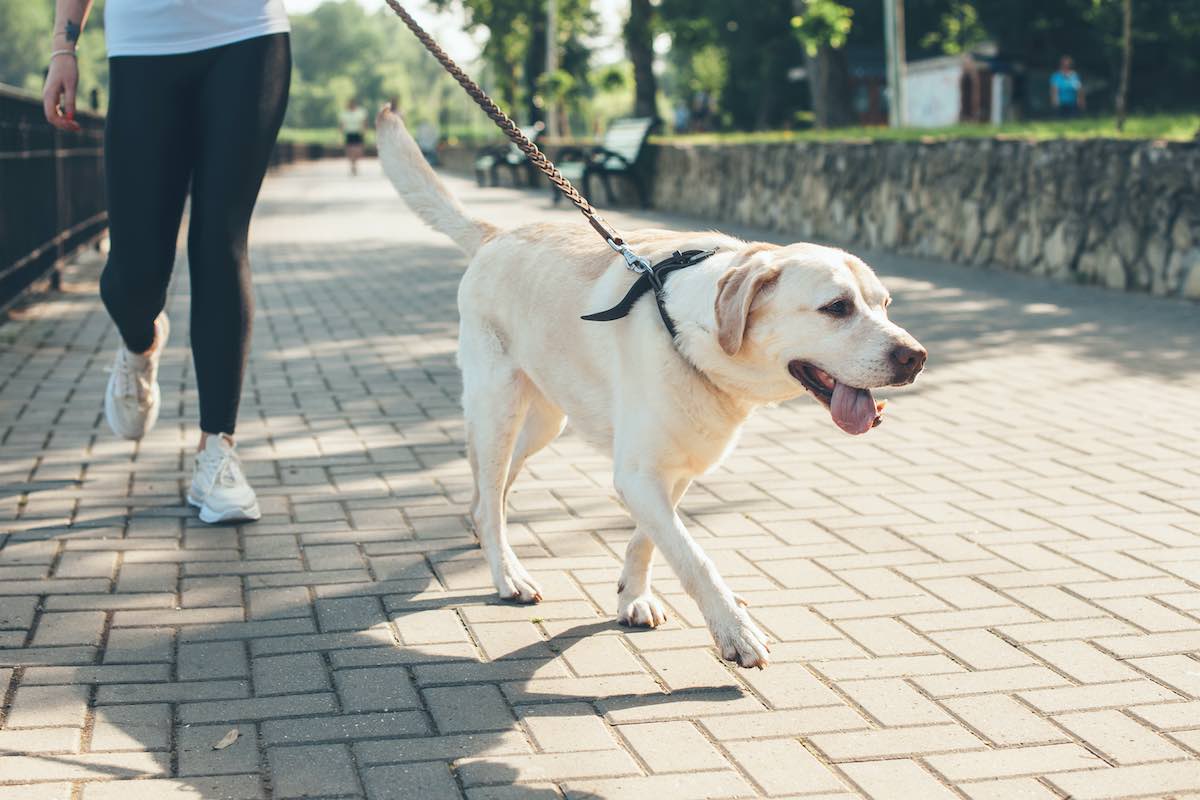Dog Training For Families: Tips For An Excellent Bonding And Learning Experience

Imagine the excitement as a family brings home their new puppy—a furry bundle of joy with bright eyes, a wagging tail, and an insatiable curiosity about the world. From the very first moment, everyone’s heart is filled with love and anticipation for the adventures ahead. This adorable pup is not just a new pet but a new family member who will grow, learn, and play alongside them.
As the days go by, the family embarks on a journey of discovery, laughter, and learning. Dog training becomes an integral part of this adventure, transforming daily interactions into opportunities for bonding and growth. Training sessions are not just about teaching commands; they are about creating memories, instilling values, and fostering a sense of teamwork and communication. Through this shared experience, the family and their new furry friend will develop a deep connection and a harmonious relationship that enriches their lives. Let’s explore the multitude of benefits that dog training offers for families.
The Perks of Dog Training for Families
Strengthening Family Bonds
Dog training provides a unique opportunity for family members to work together towards a common goal. Training sessions can become a shared activity where everyone participates, fostering teamwork and cooperation. Whether it’s teaching your dog new tricks or reinforcing good behaviour, these activities can bring family members closer, creating lasting memories and strengthening the bond between the family and their furry companion.
Improved Communication
Effective dog training relies heavily on clear and consistent communication. By engaging in training, family members learn to communicate more effectively not only with the dog but also with each other. This improvement in communication extends beyond training sessions, enhancing overall family dynamics. Consistent commands and cues ensure that the dog understands what is expected, reducing confusion and fostering a sense of security and trust.
Developing Responsibility and Routine
Training a dog teaches children and adults alike about responsibility. Assigning different training tasks to family members encourages accountability and helps establish a routine that benefits both the dog and the family. This routine can bring structure to the household, making daily life more organised and predictable. Children, in particular, can learn valuable life skills such as patience, consistency, and empathy through their involvement in dog training.
Promoting Physical Activity
Dog training is an excellent way to get the whole family moving. Training sessions often involve physical activities that can improve the fitness levels of both the dog and family members. Activities such as fetch, agility courses, and long walks provide ample exercise, contributing to a healthier lifestyle. Moreover, engaging in physical activities together can be fun and rewarding, encouraging everyone to spend more time outdoors and stay active.
Enhancing Safety and Control
A well-trained dog is less likely to engage in dangerous behaviours that could harm themselves or others. Training helps in instilling good manners and obedience, ensuring that the dog responds appropriately in various situations. This is particularly important in preventing accidents and mishaps, especially in households with young children. By investing time in training, families can ensure a safer environment for everyone, reducing stress and promoting a harmonious living space.

Introductory Tricks for Beginners
Sit
Teaching your dog to sit is one of the most fundamental commands and an excellent starting point for beginners. Here’s a simple step-by-step guide:
- Step 1: Hold a treat close to your dog’s nose.
- Step 2: Move your hand up, allowing their head to follow the treat and causing their bottom to lower.
- Step 3: Once they’re in a sitting position, say “Sit,” give them the treat, and share affection.
- Tip: Repeat this sequence a few times every day until your dog has mastered it. Consistency is key.
Stay
The “Stay” command helps in keeping your dog in one place, which can be very useful in various situations.
- Step 1: First, command your dog to sit.
- Step 2: Open your palm in front of you and say “Stay.”
- Step 3: Take a few steps back. If they stay, reward them with a treat and affection.
- Step 4: Gradually increase the distance you walk away before giving the treat.
- Tip: Patience is crucial. Increase the time and distance gradually to ensure your dog remains successful.
Come
The “Come” command is essential for keeping your dog safe and for gaining control in potentially dangerous situations.
- Step 1: Put a leash and collar on your dog.
- Step 2: Go down to their level and say, “Come,” while gently pulling on the leash.
- Step 3: When they get to you, reward them with a treat and affection.
- Tip: Practise this in a safe, enclosed area without distractions to build a reliable recall.
Down
The “Down” command helps in managing your dog’s behaviour, especially in social situations.
- Step 1: Hold a treat in your closed hand.
- Step 2: Place your hand up to your dog’s nose. When they sniff it, move your hand to the floor so they follow.
- Step 3: Slide your hand along the ground in front of them to encourage their body to follow their head.
- Step 4: Once they’re in the down position, say “Down,” give them the treat, and share affection.
- Tip: Be patient and consistent. Some dogs might find this position difficult or submissive, so encourage them gently.
Leave It
“Leave It” is a crucial command for preventing your dog from picking up something potentially harmful.
- Step 1: Place a treat in both hands.
- Step 2: Show one enclosed fist with the treat inside, and say, “Leave it.”
- Step 3: Let them lick, sniff, and paw at your hand, but ignore these behaviours.
- Step 4: Once they stop trying, give them the treat from the other hand.
- Step 5: Repeat until your dog moves away from the first fist when you say, “Leave it.”
- Tip: Use different items to practise the “Leave it” command, ensuring your dog learns to ignore various distractions.
By starting with these introductory tricks, your family can build a solid foundation of obedience and good behaviour in their dogs. These basic commands not only make daily life easier but also enhance the bond between the dog and family members, paving the way for more advanced training in the future.

Incorporating Training into Daily Routine
Making Training a Natural Part of Everyday Life
Integrating dog training into your daily routine can make the process more seamless and enjoyable for the whole family. Here are some practical ways to ensure that training becomes a regular and rewarding part of everyday life.
Training During Walks
Daily walks are an excellent opportunity to reinforce training commands and practise good behaviour.
- Heel Command: Encourage your dog to walk beside you without pulling on the leash. Use treats and praise to reward them for staying close.
- Sit at Intersections: Teach your dog to sit before crossing streets. This not only reinforces the sit command but also promotes safety.
- Recall Practice: In safe, open areas, practice the “come” command. Let your dog explore a bit, then call it back to you, rewarding it when it returns.
Playtime Training
Incorporating training into playtime can make learning fun and engaging for your dog.
- Fetch with a Twist: While playing fetch, use the opportunity to practise commands like “sit,” “stay,” and “drop it.” Before throwing the ball, ask your dog to sit and stay, and reward them for obeying.
- Tug-of-War Rules: Use games like tug-of-war to teach commands like “take it” and “leave it.” This helps instil self-control and respect for commands during exciting activities.
Mealtime Manners
Training during mealtime can teach your dog patience and good manners.
- Wait Command: Before placing the food bowl down, ask your dog to sit and wait. Only allow them to eat once you give the release command. This reinforces patience and impulse control.
- No Begging: Teach your dog to stay in their designated spot during family meals. Reward them for staying calm and not begging for food.
Reinforcing Commands Throughout the Day
Take advantage of various daily activities to reinforce commands and behaviours.
- Entering and Exiting Doors: Teach your dog to sit and wait before going through doors. This reinforces obedience and prevents them from rushing out.
- Greeting Guests: Use the opportunity of guests arriving to practise commands like “sit” and “stay.” Reward your dog for calm behaviour and proper greetings.
- Handling Distractions: Practice commands in different environments with varying levels of distractions. This helps your dog learn to obey regardless of the surroundings.
Consistency and Patience
Consistency is key to successful training. Ensure all family members use the same commands and rewards system. Patience is equally important; remember that training is a gradual process, and setbacks are normal.
By incorporating training into your daily routine, you can reinforce good behaviour and commands in a natural and enjoyable way. This approach not only makes training more effective but also strengthens the bond between your family and your dog, creating a harmonious living environment for everyone.
Professional Guidance for Optimal Results
The Role of a Professional Dog Trainer
Professional trainers bring a wealth of knowledge and experience, ensuring that both the dog and the family learn the most effective techniques and approaches. It’s worth starting off your dog’s training with a few hands-on stay and train sessions in order to set a solid foundation.
- Expertise and Experience: Professional trainers have extensive training and experience with various breeds and behavioural issues, allowing them to tailor their methods to your specific dog’s needs.
- Objective Perspective: A trainer can provide an unbiased assessment of your dog’s behaviour and offer targeted advice that might be difficult to see from within the family.
- Advanced Techniques: Trainers can introduce advanced training techniques and tools that may not be known to the average pet owner, accelerating the learning process.
Customised Training Programs
Professional dog trainers like those at Canine Evolution offer customised training programs that cater to the unique needs of your family and dog.
- Individual Assessment: Trainers begin with an individual assessment of your dog’s behaviour, personality, and any specific issues that need addressing.
- Personalised Plan: Based on the assessment, a tailored training plan is developed to meet your dog’s needs and your family’s lifestyle.
- Flexible Scheduling: Customised programs offer flexible scheduling, making it easier to fit training sessions into your family’s routine.
- Support and Resources: Trainers provide ongoing support and resources, including follow-up sessions, training materials, and advice on handling any future behavioural issues.
Success Stories and Testimonials
Nikki Tod
“Steph conducted a private lesson with our puppy at our home and I couldn’t be happier. She went through the techniques required to address the 2 areas of concern and took great care and time to teach me properly, whilst being super encouraging. It’s set us up to continue working with our pup and improving. Highly recommend Steph and Canine Evolution.”
Emily M
“Lee from Canine Evolution has been training our dog and we have noticed such a massive improvement with him and his behaviour! We always receive photo and video updates which is really nice and helpful too. Highly recommend.”
Darren Hunt
“Today for the first time I went to Canine Evolution for some much needed training for my dogs, but more importantly for ourselves. We had Verity as our trainer and help with Lee, great people skilled trainers. This training complex came with recommendations and did not disappoint at all. The detail in training was so clear and calm and in the middle of a little hassle with one of the dogs in a strange environment was rectified so well, with a more settled dog. So glad we went here for the professional training. Good work guys, we will be back.”
Long-Term Benefits
Investing in professional dog training offers long-term benefits that extend beyond the immediate results.
- Behavioural Consistency: Professional training helps ensure that your dog’s good behaviour is consistent and long-lasting, making daily life more predictable and enjoyable.
- Enhanced Bond: The structured training process can strengthen the bond between the dog and family members, as everyone works together towards common goals.
- Preventative Care: Early professional training can prevent future behavioural issues, saving time, stress, and potential costs related to addressing problems that could have been avoided.
- Confidence and Security: A well-trained dog is a more confident and secure dog, leading to a happier pet and a more relaxed household.
Enlisting the help of a professional dog trainer like Canine Evolution can set the foundation for a well-behaved, happy dog and a harmonious family life. Their expertise, personalised programs, and support can make a significant difference in the training process, ensuring that both your dog and your family thrive.
Barking Up the Right Tree: Family Benefits of Dog Training
Dog training is much more than teaching your dog basic commands; it is an enriching experience that brings families closer together. Through training, family members learn valuable life skills such as patience, consistency, and effective communication. The shared journey of training a dog transforms daily routines into meaningful interactions and creates lasting memories.
Starting with simple commands like “sit,” “stay,” and “come,” families can gradually build a strong foundation of obedience and trust with their canine companion. Incorporating training into everyday activities ensures that learning is continuous and natural, making it an integral part of the family’s lifestyle.
For those looking to achieve optimal results, professional guidance from experienced trainers at Canine Evolution can be invaluable. Our expertise, personalised training programs, and ongoing support provide families with the tools and knowledge necessary to address specific behavioural issues and enhance their dog’s overall behaviour. The benefits of professional training extend far beyond immediate obedience, fostering long-term harmony and understanding within the household.
Investing time and effort into dog training offers numerous rewards: a well-behaved and happy dog, a more cohesive and responsible family unit, and a safer and more enjoyable living environment. By starting this journey with the right mindset and support, your family can ensure a lifetime of joy and companionship with your furry friend.


